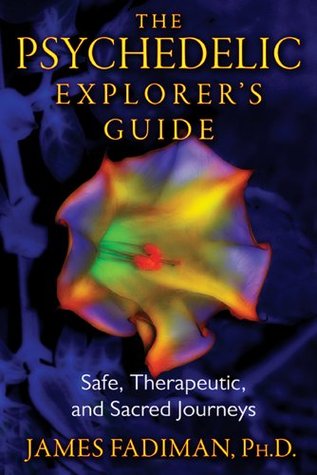More on this book
Community
Kindle Notes & Highlights
Read between
March 26 - October 8, 2018
You have been fine-tuned over millions of years to desire to be in harmony with the natural world, to be curious about your own mind, and to recognize the essential unity of which you are a part.
For most people, the predominant feeling during a session is not of discovering something new, alien, or foreign, but of recalling and reuniting with an unassailable clarity that had been latent in one’s own mind.
After reviewing hundreds of sessions in different settings, Timothy Leary and Richard Alpert (Ram Dass), while still teaching at Harvard, concluded that in most situations a voyager became distressed when the guide had become unsettled, uncertain, or upset.
The rule of thumb is the more profound the experience, the longer you should wait before doing it again. The Guild of Guides suggests a minimum of six months between entheogenic journeys because it takes at least that long for the learning and insights to be absorbed and integrated into your life.
Only those who have cultivated the art of living completely in the present have any use for making plans for the future, for when the plans mature they will be able to enjoy the results.
The wonderful thing about psychedelics was the “mind move” that occurred—the recognition of the fluidity of consciousness. My reality maps were no longer absolute.
The increased awareness offered by psychedelics comes in different forms. In higher doses taken in safe and sacred settings, they facilitate recognition of one’s intimate relationship with all living things. In moderate doses, they facilitate awareness of the intricate psychodynamic structures of one’s individual consciousness. In low doses, they facilitate awareness of solutions to technical and artistic problems.
The results of early Canadian research were sufficiently impressive to have the Public Health Department of Saskatchewan declare that a single high-dose LSD treatment of alcoholism is to be considered “no longer experimental” and “to be used where indicated.”
Less widely reported is the work done by Gary Fisher, Loretta Bender, and others with regressed and autistic children.21 In an analysis of the seven studies available, of ninety-one children aged five to fifteen who were given a wide range of doses of LSD in a variety of settings, seventy-five of the children showed either good or excellent improvement.
Dosing without the recipient knowing about it or giving permission is like rape: it is not a gift, it is not a psychedelic act, and it is never okay. This value must be actively promoted in the culture of the hosting organization.
In addition, the fact that not a single subject suffered any loss of interest or capacity in his normal work life is in sharp contradistinction to the fears still expressed in the popular and medical literature that taking a psychedelic would lead to a slacking off of motivation and involvement in cultural or scientific pursuits.


